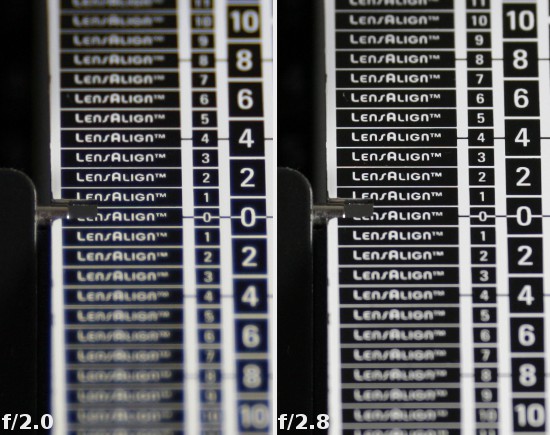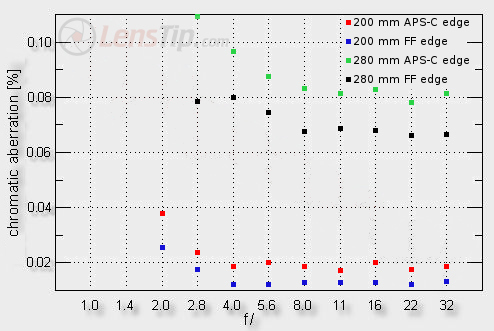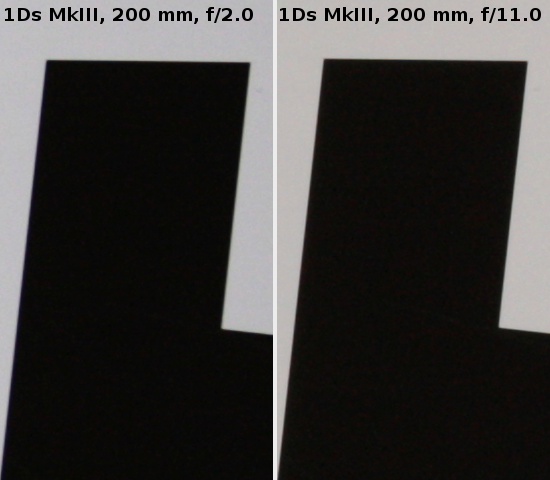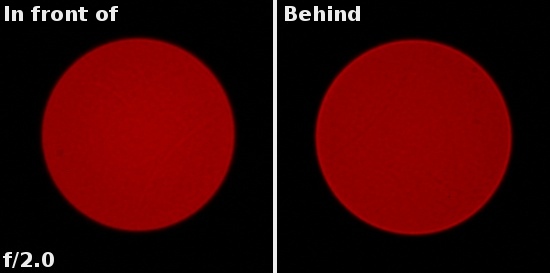Canon EF 200 mm f/2.0L IS USM
5. Chromatic and spherical aberration
 |
The lateral chromatic aberration is practically zero- the tested lens fares noticeably better than Nikkor AF-S 200 mm f/2G ED VRII, so praised by us, and slightly better than the Canon 2.8/200.
Please Support UsIf you enjoy our reviews and articles, and you want us to continue our work please, support our website by donating through PayPal. The funds are going to be used for paying our editorial team, renting servers, and equipping our testing studio; only that way we will be able to continue providing you interesting content for free. |
- - - - - - - - - - - - - - - - - - - - - - - - - - - - - - - - - - - - - - - - - - - - - - - -

After attaching the 1.4x converter the situation changes. At most of apertures the chromatic aberration is on a medium level and near the maximum relative aperture it even gets near high values.
 |
Spherical aberration
Let’s look at defocused images of a diode before and after the focal point.

As you see the light inside the circle is very evenly spread in both cases. There are no distinct extremes, either global or local, or any concentric rings. It all proves that the spherical aberration is corrected well.






